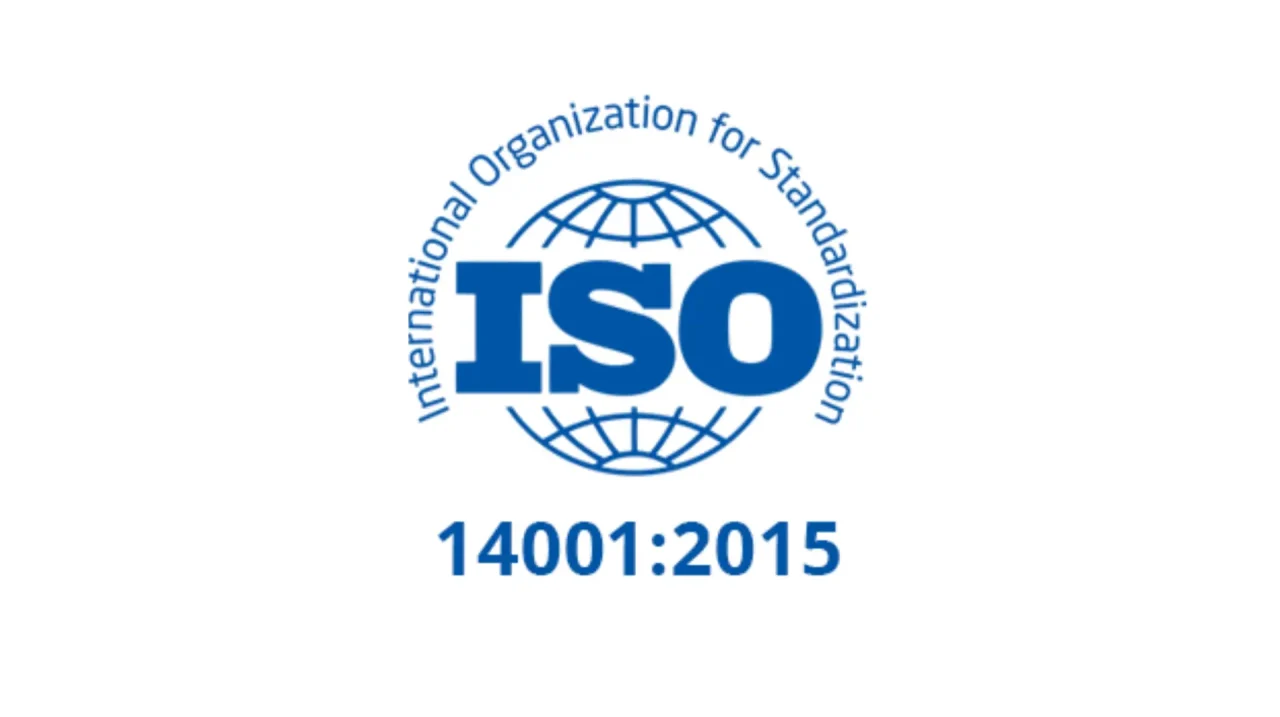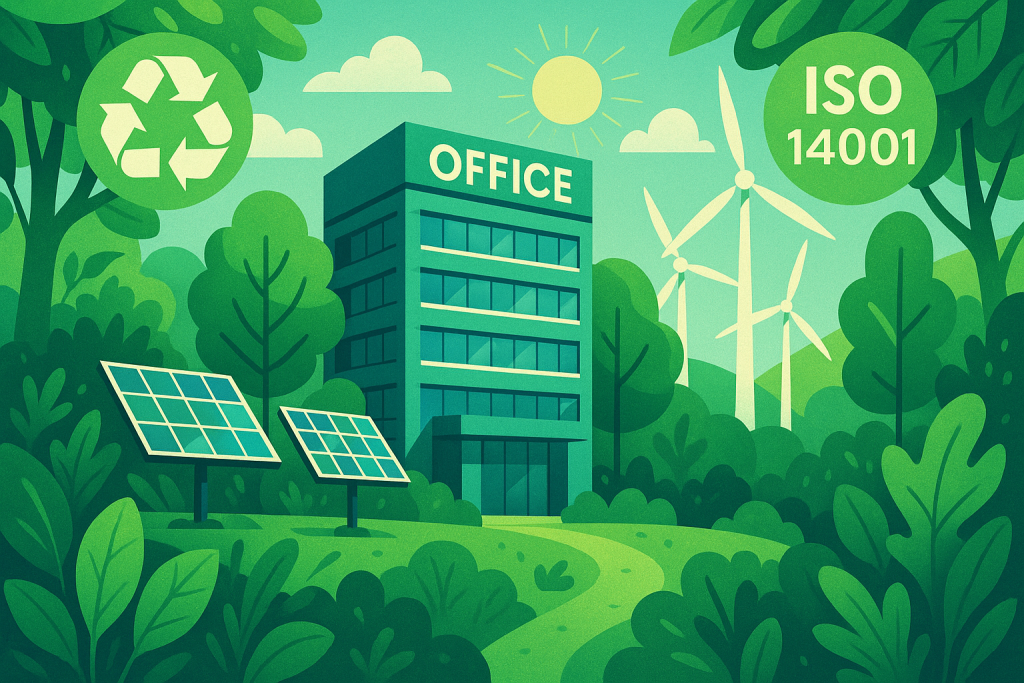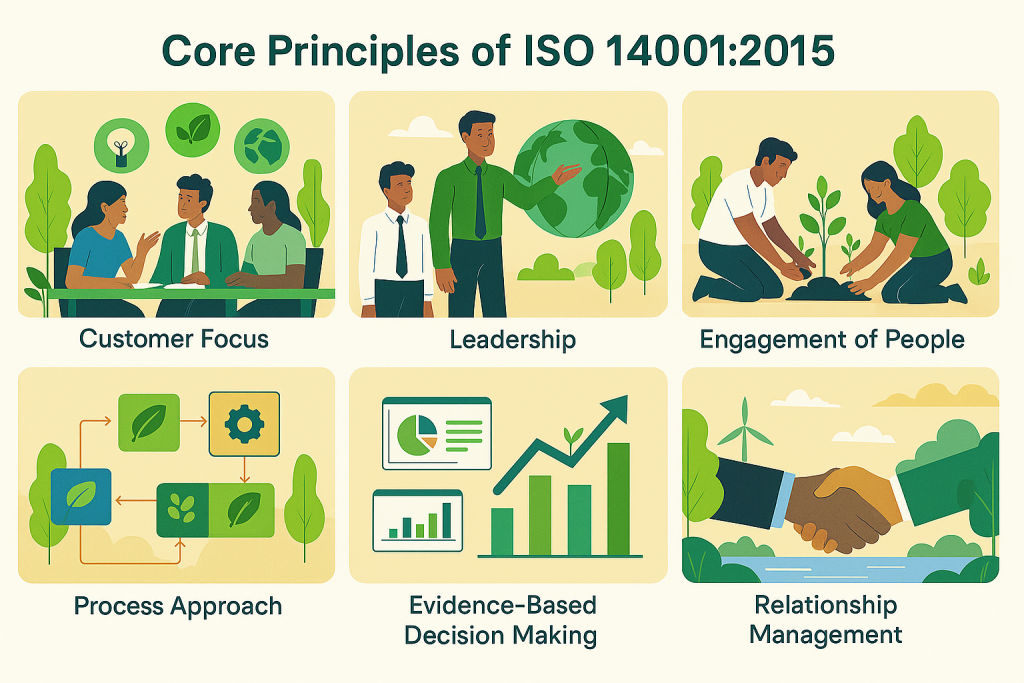ISO 14001:2015

When you interact with a company, you expect them to be environmentally responsible. Behind the scenes, one standard ensures that commitment is upheld worldwide: ISO 14001:2015 environmental management compliance.
What is ISO 14001:2015?
It is the international standard for Environmental Management Systems. It sets out a framework that helps organizations improve their environmental performance through efficient resource use, waste reduction, and compliance with legal and regulatory requirements. Think of ISO 14001 as a playbook for sustainability that focuses on minimizing environmental impact, risk management, and stakeholder engagement.
For more info, here is an ISO overview: ISO 14001 Environmental Management.

Why ISO 14001:2015 Environmental Management Compliance Feels Complex
Many organizations find ISO 14001:2015 environmental management compliance challenging because it requires identifying and assessing environmental aspects and impacts across operations, establishing environmental objectives and targets, training employees on sustainability responsibilities, integrating life cycle thinking into processes, and preparing for regular external audits. It is not just documentation; it is embedding environmental stewardship into every business activity.
As one expert source notes: "ISO 14001 on environmental management systems (EMS) is the only standard in the ISO 14000 family that can be certified to. It maps out a framework that a company or organization can follow to set up an effective EMS."
Core Principles of ISO 14001:2015

ISO 14001 is built around seven management principles adapted for environmental focus:
- Customer Focus Prioritize stakeholder needs and environmental expectations
- Leadership Create strong direction and accountability for sustainability
- Engagement of People Empower and involve employees at all levels in environmental efforts
- Process Approach Manage activities as interconnected processes with environmental considerations
- Improvement Commit to continuous environmental improvement
- Evidence Based Decision Making Use data and facts to drive environmental decisions
- Relationship Management Manage supplier and stakeholder relationships for sustainable outcomes
Risk-Based Thinking in ISO 14001:2015
A central element of ISO 14001:2015 environmental management compliance is risk-based thinking. This means proactively identifying potential environmental risks and opportunities that could affect sustainability, and embedding preventive actions into everyday processes. Instead of reacting to issues like pollution or resource depletion, businesses can predict and mitigate them.
Risk-based thinking also drives continuous improvement, encouraging organizations to regularly assess their environmental context, stakeholders, and internal operations to anticipate changes.
Another highlights: "Designed for any type of organization, regardless of its activity or sector, it can provide assurance to company management and employees as well as external stakeholders that environmental impact is being measured and improved."
In practice, this approach can range from simple measures, such as routine environmental reviews and checklists, to more advanced strategies like data-driven analytics, scenario planning, and cross-functional risk assessments. Ultimately, ISO 14001:2015 ensures that environmental management is not a one-time effort but a strategic mindset woven into every level of the organization.
Benefits of ISO 14001:2015 Environmental Management Compliance
Achieving ISO 14001:2015 environmental management compliance demonstrates to customers, regulators, and partners that your business prioritizes sustainability and responsibility. It helps reduce environmental impact, improve resource efficiency, enhance regulatory compliance, and unlock opportunities in green markets and contracts where certification is essential.
For more Compliance Frameworks insights, View Sahl Compliance Frameworks
Beyond external recognition, ISO 14001:2015 also strengthens internal culture by aligning teams around clearly defined environmental processes and goals. Employees gain a better understanding of their roles in sustainability, accountability increases, and collaboration improves across departments. This shared commitment to the environment not only boosts morale but also drives innovation, as teams are empowered to identify eco-friendly improvements and contribute to long-term business resilience.
How Sahl Simplifies ISO 14001:2015 Environmental Management Compliance
With Sahl, achieving ISO 14001:2015 environmental management compliance becomes easier and less resource-heavy. Our platform automates process documentation, collects audit-ready evidence, tracks environmental KPIs in real time, and reduces manual effort in sustainability reporting.
By streamlining compliance tasks, Sahl not only accelerates certification but also ensures ongoing adherence to ISO 14001:2015 standards. Businesses can focus more on delivering value to customers while maintaining confidence that their environmental management system remains effective, transparent, and continuously improving.
Want to see how Sahl's Compliance Automation platform can make ISO 14001 easy?
FAQs
- Who needs ISO 14001?
Any business that wants to improve environmental performance and sustainability can implement it, from manufacturing to IT services. - Is ISO 14001 mandatory?
Not legally, but many industries and contracts require it to win customers and partners. visit NQA’s ISO 14001 page. - How long does certification take with Sahl?
Traditional certification may take months. With automation, businesses shorten preparation time significantly. - Does ISO 14001 only apply to manufacturing?
No, it applies across industries, including finance, healthcare, IT, and services. - How often is ISO 14001 certification renewed?
Organizations must renew certification every three years, with annual surveillance audits to ensure ongoing compliance. - Does ISO 14001 work for small businesses?
Yes. ISO 14001 is scalable and can be tailored to fit the needs of small startups as well as large enterprises.

